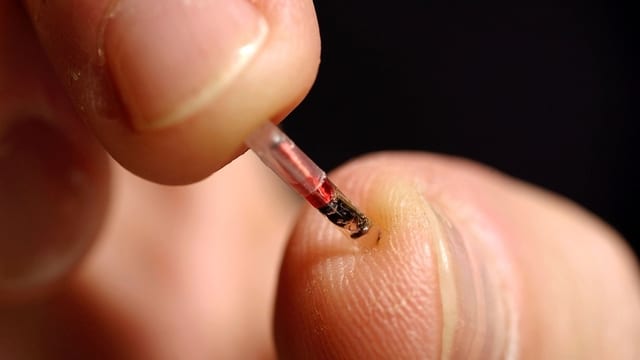Rice-Sized Microchips in Your Thumbs? Sweden Says Yes!
Swedes are now implanting tiny rice-sized microchips into their thumbs as their primary means of identification. More than 4000 people have opted to have the microchips implanted into their bodies. Though the number may seem low, more people are registering for this operation by the day. However, are these chips really that good of an idea? What risks could implanting actual technology into our bodies pose? Read on to get the full story.

Rice-Sized Microchips in Your Thumbs? Sweden Says Yes!
Sweden’s Rice-Sized Microchips – The Full Story
Even though the technology has been around for a few years now, 2018 saw a rise in the number of people adopting biotech into their lives. Sweden, specifically, is seeing a rise in the number of Swedes going through a procedure that implants rice-sized microchips into their thumbs.
These microchips are surgically implanted into a person’s thumb within a few minutes and act as a substitute for almost all of a person’s identification cards. From a gym-membership card to a credit card, the microchips can store all sorts of personal information about their users. Here’s what the founder of Biohax, the company that manufactures and develops these chips, had to say about them:
“Having different cards and tokens verifying your indentity to a bunch of different systems just doesn’t make sense […] Using a chip means that the hyper-connected surroundings that you live in every day can be streamlined.”
In theory, this sounds absolutely amazing. You’d never have to carry a wallet again and can simply carry around all of your identification without even thinking about it. However, given that mankind still hasn’t found a way to effectively manage the privacy and security of new-tech (and old tech), how safe are these chips?
How Secure is BioTech?
We don’t really have data on the security of these specific rice-sized microchips yet. However, we can look to Sweden to provide that information soon enough. With over 4000 Swedes opting to use these chips, we can expect any vulnerabilities or bugs to start showing up soon.
However, we do have precedents to look at when it comes to biotech in general. Devices like Smart cardiac defibrillators and pacemakers have been around for years now. In other words, we already have data on the security of biotech…and it’s not very pretty. Let me give you a few examples to illustrate the dangers we currently face with biotechnology:
Examples of Hackable Biotech:
- A group of undergraduate students at the University of Alabama managed to successfully hack and kill iStan; a human-like bio-simulator. iStan is used in many medical schools to help med students practice on a fully functioning human system without injuring any real humans. The students hacked into iStan’s pacemaker and toyed around with its settings. This caused iStan to die a very painful death.
- The IoT Search Engine, Shodan, logs over 100,000 records of Smart medical equipment publically. Anyone who wants to can find and exploit a patient’s identifying data. In fact, problems with the biotech field are so rampant that TrendMicro released a 30 paged document detailing all of the cybersecurity threats that are currently affecting the field.
- This year’s Black Hat and Def Con security conferences in Las Vegas specifically covered the hackability of pacemakers, defibrillators, and insulin pumps. In fact, security researches Billy Rios (WhiteScope) and Jonathan Butts (QED Secure Solutions) even demonstrated how an attacker can install malicious firmware on the devices doctors use to control this biotech, effectively taking control of a patient’s health.
Scary? Yes. We usually relate hacks as dangerous but limited to the virtual world. With the increased security risks that biotech poses, this could easily change. Hackers could become physical threats to anyone who has to rely on these smart medical devices. Simply put, these devices are considered part of the IoT, which isn’t very secure. The good news is that security researchers are working on fixing these vulnerabilities.
Sweden’s Rice-Sized Microchips – Final Thoughts
The future is here, and it doesn’t seem that secure. Advancements in fields like biotechnology do project mankind into a more connected existence. However, our inability to secure biotech poses a huge risk to all of us. We still don’t know what problems Swede’s rice-sized microchips will pose to their new users. For now, we have to wait and see what vulnerabilities arise from these chips. We should also pay attention to how manufacturers deal with the new cybersecurity threats.





